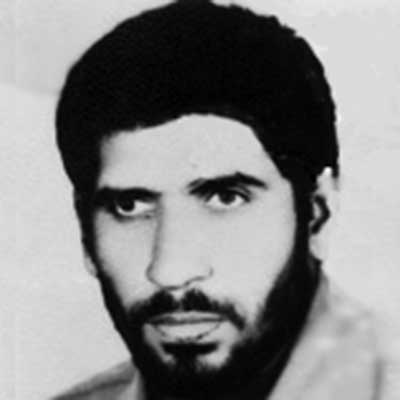Ahmadi, Safar
: Masoumeh Abedini
279 بازدید
Safar Ahmadi (1950–1983) served as the commander of the Hazrat Abalfazl (as) Battalion of the Independent Imam Hassan Mojtaba (as) Brigade during the Iran-Iraq War.
He was born in 1950 in Jahangiri Village, a district of Masjed Soleyman. His mother was a homemaker, and his father made a living farming and raising livestock. Safar would have to walk three to four kilometers daily just to attend primary school. Ahmadi had to move to Masjed Soleyman just so he could continue his education and attend elementary school. There, he lived with his relatives. Later, when his father was hospitalized in Ahvaz, the family relocated there, and Ahmadi worked after school to help cover the family's expenses.
With the worsening of his father’s health, the family moved to Shush, where his brother had found a job. Shortly after their arrival, his father passed away in 1975.
As the revolution protests of Iranian people against the Pahlavi regime gained momentum, Ahmadi, and a few friends, joined the popular movement under the leadership of Seyyed Muhammad Kazem Danesh (who later became a member of the Islamic Consultative Assembly and was martyred in the 7th of Tir Tragedy). He would distribute leaflets and pamphlets containing Imam Khomeini's messages and remarks to raise awareness about the Pahlavi regime's atrocities. He organized the first public demonstration in Shush, for which he and his friends were identified by SAVAK, arrested the day after, and imprisoned. The lack of evidence against them and the public pressure forced SAVAK to release them just shortly after their arrest.
After the victory of the Islamic Revolution, Ahmadi initially joined the Islamic Revolution Committee and became a member of the Islamic Revolutionary Guard Corps (IRGC) of Shush. When conflicts in Kurdistan broke out, he, along with other forces, was deployed. With the onset of the Iran-Iraq War on September 22, 1980, Ahmadi and other fighters confronted the Baathist forces that had reached the banks of the Karkheh River and were just four kilometers away from Shush. Despite being outnumbered, they held their ground until reinforcements arrived. During the enemy's attacks, Ahmadi was injured and transferred to Shush for treatment.
He was later drafted for mandatory military service, spending about three months at the Cheheldokhtar garrison in Shahroud. During his service, he established an Islamic association in the garrison. However, due to an eye problem, he was discharged from service and returned to Shush, where he joined the Basij forces. He participated in Operation Fath al-Mubin. He also led the Danyal Battalion, for which he deployed to Koushk to provide support for Operation Beit al-Muqaddas. It was in this operation that he was severely injured as a result of shrapnel hitting his arm, leg, and abdomen. After a partial recovery, he returned to the frontlines and joined the 15th Imam Hassan Mojtaba (as) Brigade as the deputy commander of the Martyr Rajaei Battalion.
During Operation Valfajr, Ahmadi, despite sustaining grave injuries, continued to fight alongside his comrades. His wounds were so severe that he had to go back to Tehran for further treatment.
Later, Ahmadi joined the 8th region of the IRGC and served in the Imam Hassan Mojtaba (as) Brigade. In 1983, shortly after getting married, he returned to the frontlines to prepare for Operation Kheibar. A few days before the operation, a journalist asked him if he had any messages for his family. He said, "I have no message because I do not belong to my family. I promise the families of the martyrs that we will either open the road towards Karbala or attain martyrdom".
On January 1, 1984, Ahmadi was appointed commander of the Hazrat Abalfazl (as) Battalion. During Operation Kheibar, he led his battalion in resisting Baathist counterattacks. On February 26, 1984, he was martyred after being hit by a mortar shrapnel in Tigris.
In his will, Safar Ahmadi wrote: "My dear brothers and sisters, do not remain inactive; for it is time to rise up. Do not remain silent; it is time to call out. You should not be indifferent for it is a sin. Throughout history, there have only been two paths: truth and falsehood. One is the path of God, and the other is the path of Satan. Whoever is not on the path of God is undoubtedly on the path of Satan, even if he is unaware or unwilling. This Revolution is a divinely-inspired movement; anyone who opposes the Revolution will perish and anyone who tries to stop its progress will be destroyed. May God grant us the ability to continue on the martyrs' bloodstained path".[1]
[1] A summary of an article published in the Sacred Defense Encyclopedia, Vol. 1, Tehran, The Center of Encyclopedia of the Sacred Defense Research Institute, 2011, Pp. 362-364.



